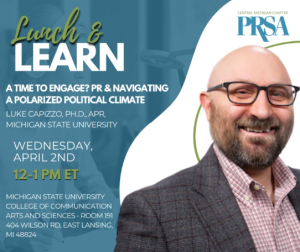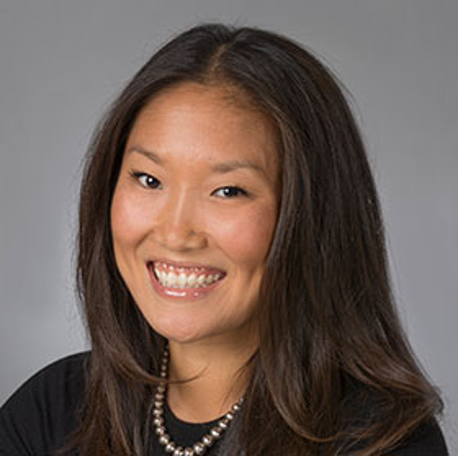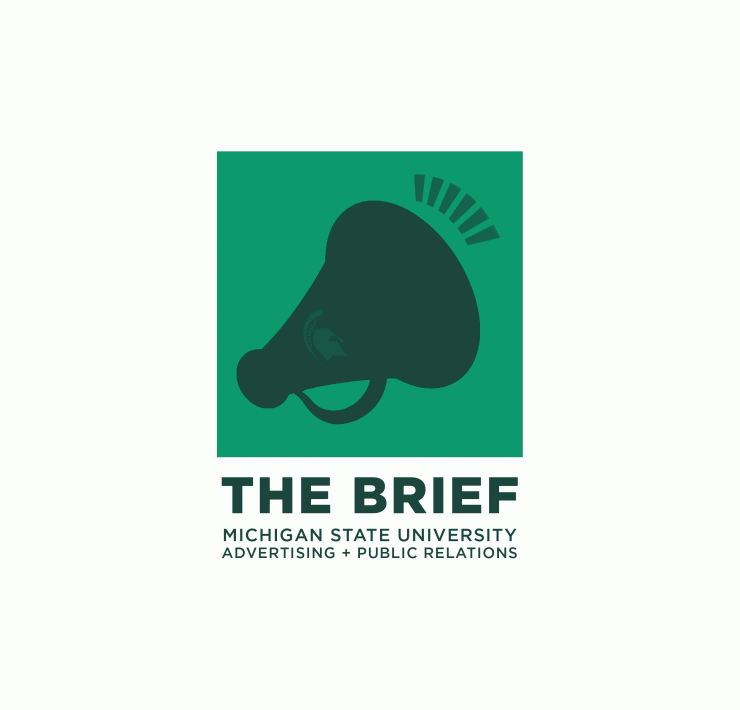Faculty Perspective: DEI’s Role During Times of Polarization

With polarization in electorate and consumer groups, ADPR assistant professor, Dr. Luke Capizzo, explores how PR pros reinforce the need for diverse contribution, messaging and advocacy
By: Jaylen Baker
A Moment of Change
In 2015, Dr. Luke Capizzo sat in his parent’s home when the U.S. Supreme Court ruled 5-4 in Obergefell v. Hodges, officially recognizing marriage between same-sex couples nationwide.
Amid the drama and celebration, Capizzo — now an assistant professor of public relations at Michigan State University — gathered his thoughts through the noise.
“It was a moment for me and a lot of folks in our universe,” he said. “I recognized that this is something that we need to be engaged in now.”

The Societal Pendulum
The acceptance of inclusionary concepts at scale in the 2010s prorated attention for initiatives seen in corporate reform, pop culture and education. A societal pendulum began to swing into momentum as attitudes changed.
“Organizations feel like they have to say something about a litany of different issues that pop up in the 2020s,” said Capizzo. Adding, “the swing of the societal pendulum has started to come back at first slowly and recently relatively quickly.”
Corporate Social Advocacy vs. Corporate Social Responsibility
Inclusionary programs in the U.S. now face high-profile rollbacks. In January of 2025, the Trump administration issued three executive orders aimed at dismantling diversity, equity, inclusionary and accessibility-based language and policy from reference in federal agencies.
Critics argue that dismantling DEIA initiatives in government, corporate and nonprofit organizations threaten to reverse equitable progress.
Organizations taking stances on divisive issues outside their core mission are also facing scrutiny, with heightened consumer expectation from parasocial brand association.
“ExxonMobil talking about climate change, even if it’s polarizing, does not count,” Capizzo said. “ExxonMobil talking about LGBTQ+ issues would be corporate social advocacy. A decade of research shows that generally, it’s good for organizations to do that.”
Capizzo says that most organizations today are concerned with authenticity and profitability. Corporate Social Advocacy offers them the option to agenda-set and align with industry-relevant initiatives externally.
Consumers and Moral Decoupling
At a spring 2025 symposium A Time to Engage? PR & Navigating a Polarized Political Climate, Capizzo explored moral decoupling — the idea that consumers separate moral judgment from performance evaluation in relation to CSA initiatives.
“We’re living in that misalignment,” said Capizzo. “People buy from companies even when their beliefs don’t fully align.”
To fully understand the effect of this consumer misalignment, Capizzo said that there will need to be further research to prove ecological validity — generally applying one’s findings to real-world implications of contentious issues management.
The Future of Inclusion in PR
As political polarization deepens, Capizzo advises future communicators to prioritize inclusion.
“Smart organizations lean toward inclusion for long-term benefit,” he said. “The question to ask is: ‘How can this message include more people rather than exclude?’
To learn more about Capizzo’s research and what practitioners can do to include intentionally, visit the AD+PR staff directory.














